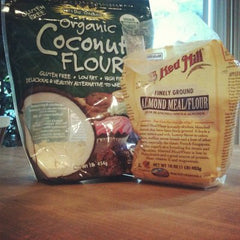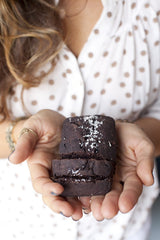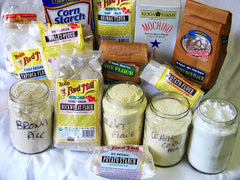
Finding out that you have a gluten allergy used to mean kissing baked goods goodbye forever, but with the increasing awareness of gluten-related health issues, gluten-free treat options are on the rise. While most stores now carry large selections of gluten free cookies, crackers, breads, and other baked goods, we prefer to make our own and with our guide to gluten-free flour options, it’s easy as pie.

The Easy Option: Cup4Cup
Cup4Cup was developed by Lena Kwak, a Research and Development Chef for the world-renowned restaurant, French Laundry, in Yountville, CA. Cup4Cup offers a variety of blends including an Original Flour Blend, a Wholesome Flour Blend, a Pizza Crust Mix, and a Pancake and Waffle Mix. The beauty of the Cup4Cup flour blends is that they can be swapped out for traditional flours without having to change proportions, making them absolutely fool-proof for anyone that wants to bake all of their favorite treats without having to alter the recipes. This is the best option for a novice baker or anyone that doesn’t want to spend a lot of time experimenting with gluten-free flour options.

Paleo-Friendly Flours
Because the paleo diet eliminates grains entirely, any flours that are paleo-friendly are also gluten-free. These flours tend to be on the heavier side, so some alterations to recipes that call for traditional flour will most likely be necessary. Nut flours like almond flour or hazelnut flour provide substantial amounts of protein and work well for baked goods that are intended have higher moisture contents. There are a few things that are important to remember when working with nut flours. First is that the finer the grind, the better the baked good will turn out in most cases. Also, nut flours tend to burn a little more easily than traditional flours, so adjust your baking temperature to 25°F – 50°F lower than what the recipe calls for and bake for longer if necessary. Coconut flour is another excellent paleo-friendly baking option. It is rich in fiber, but is also very absorbent so additional wet ingredients may be required to avoid a drier baked good. Because both of these flours are free of gluten, baked goods made with these flours may not bind or hold together as well as they would with the use of traditional flour. If you are creating something that you would like to hold together instead of crumble, you may want to consider adding a small amount of xanthan or guar gum or psyllium husks to thicken, bind, and stabilize your gluten-free baked goods. In some instances, pureed fruits can be used as a binding ingredient as well. We use ripe bananas to give our gluten-free Cacao Magic Paleo Bread a delightfully spongey soft texture.
Gluten-Free Grain-Based Flours
Since gluten is only present in wheat, rye, barley, and triticale, any other grains can be used to make flours that are free of gluten. Rice, millet, buckwheat, amaranth, quinoa, sorghum, teff, and certified gluten-free oats can all be ground into flour and each one has its own unique properties. Oat, rice, and sorghum flours tend to be most similar to all-purpose flour because of their medium starch contents, but may not be able to be substituted 1:1 depending on the recipe. Millet, buckwheat, amaranth, quinoa, and teff flours have higher starch contents, and like almond and coconut flours, tend to result in baked goods that are denser. Using these heavier flours often necessitates a few recipe alterations to avoid a finished product that is tough or dry. Again, without gluten to bind your baked goods, you will most likely want to add one of the binders mentioned above, like xanthan or guar gum, particularly if you are making something that you want to hold together like cookies or pie crusts.

Root and Tuber Flours
While root and tuber flours can rarely be used on their own, these lower starch flours are excellent ingredients for adding thickness, structure, or an airy texture to your gluten-free baked goods. Arrowroot starch and tapioca are great thickening agents for sauces, fillings, and batters, while potato starch can help create light and fluffy baked goods.

Of course, any seasoned baker knows that the best results come from repeated trails and recipes that have been refined across many attempts. We always recommend approaching your time in the kitchen with a sense of curiosity and playfulness and would love to know what helpful tips you’ve learned about gluten-free baking from your kitchen experiments. Feel free to share your gluten-free baking tips and tricks in the comments below and be sure to connect with us on Facebook, Twitter, and Instagram!

Images sources from first to last: The Philosophie, Cup4Cup, Small Kitchen College, The Gluten-Free Spouse, The Root of Health, + The Philosophie Recipe Blog.
































